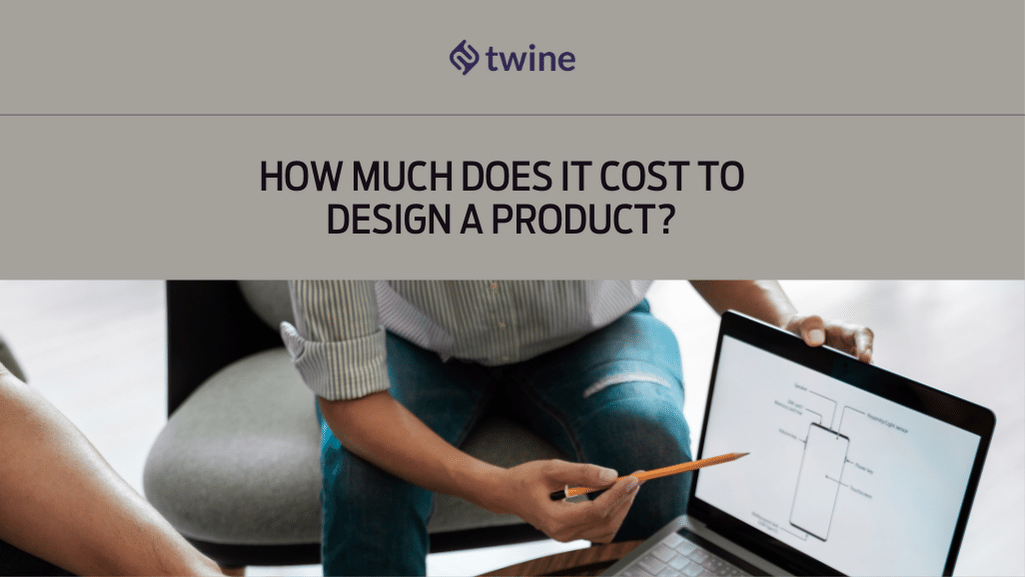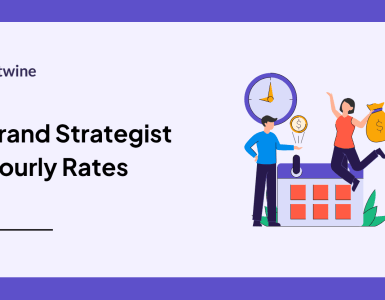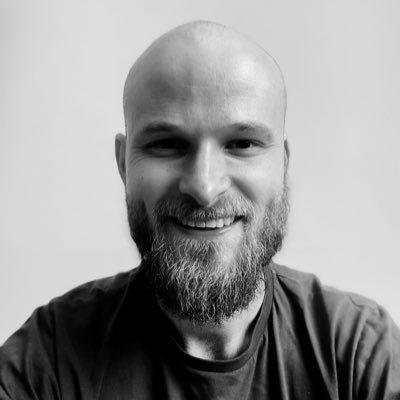
Designing a new product can be an exciting and challenging endeavor, but one of the most critical factors to consider is the cost. The product design process can involve a wide range of activities, from initial concept development to prototyping, manufacturing, and beyond. Understanding the various factors that influence product design cost is essential for budgeting and hiring product designers.
Introduction to Product Design Cost
Designing a new product is exciting, but one of the first questions most teams ask is simple: what’s the real cost to design a product? Between early sketches, prototyping, testing and preparing for manufacture, the budget can grow quickly if you don’t plan ahead.
Product design is a complex, multi-stage process that requires time, specialist skills and the right tools. The product design cost for your project will depend on what you’re building, how complex it is, and whether you work with a freelance product designer or a full-service agency.
In this comprehensive guide, we’ll explore the various factors that influence product design cost, common pricing models, and strategies for managing and reducing costs throughout the design process. Whether you’re an entrepreneur, a product manager, or a designer, this guide will provide you with the insights and tools you need to make informed decisions about your product design budget.
Key Factors that Influence Product Design Cost
1. Scope of the Project
The complexity and scope of the project are primary determinants of the cost. A simple product with a straightforward design will naturally cost less than a complex one that requires extensive research and development.
- Simple Products: Basic consumer goods like a new kitchen gadget.
- Complex Products: Tech devices, medical equipment, or products with intricate mechanical components.
How Scope Affects the Cost to Design a Product
Product type | Examples | Typical characteristics | Impact on product design cost |
|---|---|---|---|
Simple products | Kitchen gadget, basic home accessory | Few moving parts, simple materials, low risk | Lower cost, fewer design stages, faster to develop |
Moderately complex | Consumer electronics, smart devices | Electronics, enclosures, some certification | Medium cost, more prototyping and testing required |
Highly complex | Medical devices, aerospace components | Strict regulations, high risk, advanced tech | High cost, multiple iterations and specialist input |
As complexity increases, the number of design iterations, specialists and tests increases too, which is why the cost to design a product can vary so dramatically between categories.
2. Design Stages
Product design is a multi-stage process, and each stage incurs different costs:
- Research and Ideation: This initial phase involves market research, user interviews, and brainstorming sessions to develop a concept.
- Concept Development: Designers create sketches and basic models to visualise the idea.
- Detailed Design: This stage includes creating detailed CAD models, technical drawings, and specifications.
- Prototyping: Developing functional prototypes to test and refine the design.
- Testing and Validation: Ensuring the product meets all requirements and standards.
- Final Design and Production Preparation: Finalising the design and preparing for manufacturing.
Common Product Design Pricing Models
Pricing model | How it works | Best for clients who… | Watch out for… |
|---|---|---|---|
Hourly rates | Pay per hour of work | Have flexible scope or need ad hoc support | Harder to predict final product design cost |
Fixed-fee pricing | One agreed price for the full project | Want a clear budget and detailed brief | Scope creep if requirements change mid-project |
Value-based pricing | Fees tied to expected value/impact | Have high-value products or strong commercial upside | More subjective, requires trust and clear alignment |
Milestone-based | Pay per phase or milestone | Want transparency and checkpoints built into the process | Extra admin if scope frequently changes |
3. Designer’s Experience and Location
The experience level of the designer or design team significantly impacts costs. Experienced designers with a proven track record charge more than those just starting out.
- Freelancers: Typically, freelancers charge between $25 and $500 per hour depending on their expertise, portfolio and location. At the lower end, you’ll often find junior designers or those in lower-cost regions, while senior specialists and niche experts sit at the top of this range. Here is the complete breakdown of the product designer’s hourly rate.
- Design Agencies: Agencies offer a broader range of services and expertise but come at a higher price.
When you’re comparing quotes, look beyond the hourly number and ask what’s included, how they work, and what similar projects they’ve completed before. Location also plays a role. Designers in regions with a higher cost of living will charge more than those in lower-cost areas.
4. Tools and Technologies
The tools and technologies required for product design can add to the cost. Specialised software (e.g., CAD software like SolidWorks or AutoCAD) and hardware (high-end computers, 3D printers) are often necessary for high-quality design work.
5. Industry Standards and Regulations
Certain industries, such as medical devices or aerospace, have strict standards and regulations that must be adhered to. Meeting these requirements often requires additional expertise and testing, increasing the overall cost.
Common Pricing Models for Product Design Projects
There are several common pricing models used in the product design industry, each with its own advantages and disadvantages. These include:
- Hourly Rates: This model involves charging a fixed hourly rate for the design team’s time. This can be useful for projects with a flexible scope, but it may be more difficult to predict the final cost. Learn more about product designer’s hourly rate here.
- Fixed-Fee Pricing: In this model, the design team provides a fixed quote for the entire project, regardless of the time or resources required. This can provide more predictability for the client, but it may also involve more risk for the design team.
- Value-Based Pricing: This model focuses on the value that the product design will provide to the client, rather than the time or resources required. This can be a more subjective approach, but it can also result in higher overall fees.
- Milestone-Based Pricing: In this model, the project is divided into specific milestones or phases, with each phase being billed separately. This can provide more transparency and control over the design process.
Product Design Stages and How They Affect Cost
The product design process typically involves several key stages, each with its own unique cost considerations:
- Concept Development: This stage involves the initial research, ideation, and development of the product concept. The cost of this stage can vary depending on the complexity of the design and the level of research required.
- Prototyping: The prototyping stage involves the creation of physical or digital models to test and refine the product design. The cost of prototyping can vary widely depending on the materials, manufacturing processes, and the number of iterations required.
- Manufacturing and Production: Once the design is finalised, the product must be prepared for mass production. The cost of this stage can be influenced by factors such as the choice of manufacturing processes, the cost of materials and components, and the volume of production.
- Testing and Validation: Throughout the design process, the product must be tested and validated to ensure that it meets all necessary safety and performance requirements. The cost of this stage can vary depending on the complexity of the testing and the number of iterations required.
Estimating the Cost of Concept Development
The cost of concept development can be difficult to estimate, as it can involve a wide range of activities, from market research to ideation and prototyping. However, some key factors to consider include:
- Research and Analysis: The time and resources required for market research, user interviews, and competitive analysis can significantly impact the cost of this stage.
- Ideation and Brainstorming: The number of team members involved, the duration of the ideation process, and the complexity of the design concepts can all affect the cost.
- Concept Refinement: The number of iterations and the level of detail required to refine the concept can also add to the overall cost.
To estimate the cost of concept development, it’s important to carefully consider the scope of the project, the level of expertise required, and the resources needed to complete the various tasks.
As a rough guide, concept development for a simple consumer product might sit at the lower end of the range, while complex or highly innovative products can quickly move towards the top. The more clarity you bring to the brief, the easier it will be for designers to estimate this stage accurately.
Calculating the Cost of Prototyping
Prototyping is a critical stage in the product design process, but it can also be one of the most expensive. The cost of prototyping can vary depending on factors such as:
- Materials and Manufacturing Processes: The choice of materials and manufacturing processes, such as 3D printing, CNC machining, or injection molding, can have a significant impact on the cost of prototyping.
- Number of Iterations: The number of iterations required to refine the design can also add to the overall cost of prototyping.
- Testing and Validation: The cost of testing and validating the prototype, including any specialised equipment or facilities, should also be factored into the overall budget.
To calculate the cost of prototyping, it’s important to carefully consider the scope of the project, the level of detail required, and the resources needed to complete the various tasks.
As a rough guide, concept development for a simple consumer product might sit at the lower end of the range, while complex or highly innovative products can quickly move towards the top. The more clarity you bring to the brief, the easier it will be for designers to estimate this stage accurately.
Breakdown of Typical Product Design Project Costs
To give you a more concrete idea, here’s a rough breakdown of typical costs associated with each stage of product design:
Typical Product Design Project Costs by Stage
Design stage | Typical cost range (USD) | What’s included |
|---|---|---|
Research and ideation | $2,000 – $10,000 | Market research, user interviews, problem definition, early concepts |
Concept development | $5,000 – $15,000 | Concept sketches, initial CAD, basic feasibility checks |
Detailed design | $10,000 – $50,000 | Full CAD models, engineering details, materials and component selection |
Prototyping | $5,000 – $20,000 | Physical or digital prototypes, multiple iterations |
Testing and validation | $5,000 – $30,000 | Performance tests, safety checks, compliance verification |
Final design and production preparation | $10,000 – $30,000 | Design for manufacture, tooling input, production documentation |
As you can see, these figures can vary significantly based on the scope and complexity of your project, as well as the industry you operate in. For a simple consumer product, the total design cost might range from $20,000 to $50,000, while for a complex tech device, it could go up to $100,000 or more.
Additional Costs to Consider in Product Design
In addition to the core design and manufacturing costs, there are several other factors to consider when budgeting for a product design project, including:
- Legal and Regulatory Compliance: Depending on the industry and the product, there may be specific legal and regulatory requirements that need to be met, which can add to the overall cost.
- Packaging and Labeling: The cost of designing and producing the product packaging and labeling can also be a significant expense.
- Marketing and Branding: The cost of developing the product’s branding, marketing materials, and promotional campaigns should also be factored into the overall budget.
- Shipping and Logistics: The cost of shipping the product to customers or retailers can also be a significant expense, especially for bulky or heavy items.
- Ongoing Maintenance and Support: The cost of providing ongoing maintenance and support for the product, such as software updates or customer service, should also be considered.
By carefully considering these additional costs, you can develop a more comprehensive and accurate budget for your product design project.
Final Thoughts
Designing a new product is a complex and multifaceted process that requires a careful balance of cost and quality. By understanding the various factors that influence product design cost, and by implementing strategies to optimise your budget, you can ensure that your product design project delivers the best possible value to your customers.
Whether you choose to work with a product design agency or hire freelance product designers, it’s important to carefully consider your project’s scope, your budget, and your overall goals to ensure that you find the right balance of cost and quality.
Ready to Take the Next Step in Your Product Design Journey?
If you’re ready to move from idea to working prototype, Twine can connect you with experienced freelance product designers and engineers who’ve shipped real products in your space.
Find a freelance product designer on Twine and start turning your concept into a manufacturable product with a clear, controlled budget.
If you’d like any extra help, here are a few other articles we’ve written on the topic:
- Find out what makes a good project brief
- How to write the perfect product designer job description
- Find out how much product designer’s charge by the hour




